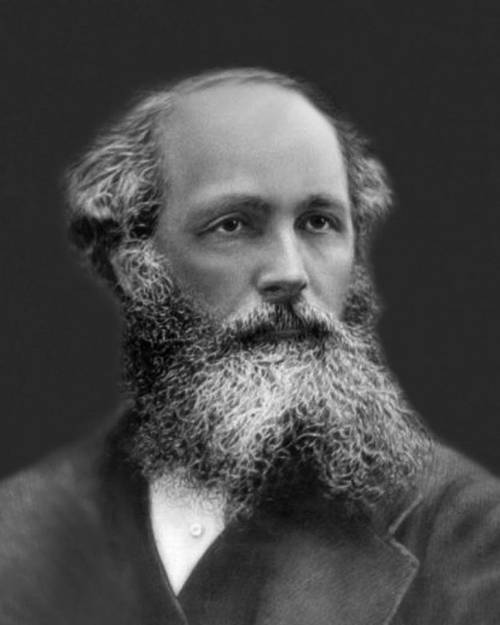
FAQ About James Clerk Maxwell

Who was James Clerk Maxwell?
James Clerk Maxwell was a Scottish physicist born on June 13, 1831, in Edinburgh, Scotland. He is best known for his formulation of the classical theory of electromagnetic radiation. His contributions are considered fundamental to the fields of physics and paved the way for modern electrical engineering, physics, and communications.

What are Maxwell's Equations?
Maxwell's Equations are a set of four fundamental equations formulated by James Clerk Maxwell. They describe how electric fields and magnetic fields interact and how they propagate as electromagnetic waves. These equations are essential in understanding electromagnetism and are used extensively in electrical and communications engineering.

How did Maxwell contribute to the understanding of electromagnetic waves?
James Clerk Maxwell demonstrated that electricity and magnetism are two aspects of the same phenomenon: the electromagnetic field. He showed that changes in these fields produce electromagnetic waves, which propagate through space at the speed of light. This discovery linked light to electromagnetism and led to the development of wave theory in physics.

Why is Maxwell considered a key figure in physics?
Maxwell is considered a key figure in physics because he provided a unifying theory that connected electricity, magnetism, and light. His work laid the groundwork for numerous technological advancements and helped bridge classical physics and the onset of modern physics. His equations also helped Einstein form his theory of relativity.

What impact did Maxwell's work have on modern technology?
Maxwell's work had a profound impact on modern technology. His theories on electromagnetic fields underpin the operation of nearly all electrical and electronic devices today, including radios, televisions, mobile phones, and the internet. His equations also paved the way for further scientific developments, including quantum mechanics and relativity.

What was Maxwell's role in the development of color photography?
Maxwell is credited with producing the first color photograph in 1861. He used three separate black-and-white photographs taken through red, green, and blue filters. By combining these images, he demonstrated the principles of additive color synthesis, which is fundamental to color photography and display technologies today.

What was Maxwell's background and education?
Maxwell was educated initially at home by his mother and a tutor before attending the Edinburgh Academy. He later studied at the University of Edinburgh and Trinity College, Cambridge, where he excelled in the fields of mathematics and physics. His academic background laid a strong foundation for his groundbreaking scientific work.

Did Maxwell receive any recognition during his lifetime?
Although Maxwell's work was not fully appreciated during his lifetime, he did receive several honors. He was elected a Fellow of the Royal Society at the age of 25 and served as the first Cavendish Professor of Physics at the University of Cambridge. Maxwell's significant contributions were fully recognized after his death.

How did Maxwell's theories influence Albert Einstein?
Maxwell's theories greatly influenced Albert Einstein. In fact, Einstein once said that the work of Maxwell represented "the most profound and the most fruitful that physics has experienced since the time of Newton." Maxwell's equations formed a crucial foundation for Einstein's development of the theory of relativity.

What are some lesser-known facts about James Clerk Maxwell?
A lesser-known fact about Maxwell is that he had a keen interest in poetry and literature; he often wrote poems and parodies. Additionally, he was a devout Christian, which influenced much of his personal philosophy and outlook on science and nature. Maxwell was also noted for his sense of humor, which he maintained despite his rigorous scientific pursuits.

Where did Maxwell conduct his most important work?
Maxwell conducted much of his most important work at King's College London, where he was appointed to the Chair of Natural Philosophy. It was here that he experimented with and studied electromagnetism, leading to the formulation of his famous equations. Later, as the first Cavendish Professor at Cambridge, he continued his research while organizing the university's new Cavendish Laboratory.

What was Maxwell's contribution to the kinetic theory of gases?
Maxwell made significant contributions to the kinetic theory of gases by developing the Maxwell-Boltzmann distribution, which describes the distribution of speeds among the molecules of a gas. This work provided valuable insights into the behavior of gases and laid the groundwork for statistical mechanics and thermodynamics.

Did Maxwell make any contributions to astronomy?
Maxwell contributed to astronomy by studying the rings of Saturn. He proposed that the rings were composed of numerous small particles rather than a solid or liquid. His conclusion was later confirmed by observations and remains a cornerstone in the study of planetary rings.

How did Maxwell's work influence telecommunications?
Maxwell's equations describe the fundamental principles of electromagnetic waves, which include radio waves used in telecommunications. His work laid the theoretical groundwork for the wireless technologies that enable radio, television, and mobile communications, thus revolutionizing telecommunications.

What is the Maxwell-Boltzmann distribution?
The Maxwell-Boltzmann distribution is a statistical distribution that describes the velocities of particles in a gas. Developed by Maxwell in collaboration with Ludwig Boltzmann, it is a key concept in statistical mechanics, providing insights into properties such as temperature and pressure in thermodynamic systems.

Did Maxwell work on any projects while at the University of Edinburgh?
At the University of Edinburgh, Maxwell worked on various scientific projects, including studies in geometry and mechanics. His early work during this time, especially on geometric figures and curves, demonstrated his budding interest and talent in mathematical physics, which he would continue to develop in his later career.

How are Maxwell's theories used in modern physics?
In modern physics, Maxwell's equations are fundamental to electromagnetic theory and have been extended into quantum electrodynamics. They are also utilized in engineering fields to design a wide range of technologies, including antennae, lasers, and particle accelerators, showcasing their versatile application in contemporary science and industry.

What challenges did Maxwell face in his career?
Maxwell faced several challenges, including the initial skepticism of his peers who did not immediately grasp the implications of his electromagnetic theories. Additionally, he struggled with health issues throughout his life. Nevertheless, his perseverance and innovations eventually led to widespread recognition of his work's importance.

Was Maxwell involved in any scientific societies or organizations?
Maxwell was actively involved in scientific societies and organizations. He was a fellow of the Royal Society and actively participated in the British Association for the Advancement of Science. His engagement with these societies allowed him to share his ideas and collaborate with contemporaries in further advancing scientific understanding.

How did Maxwell's personal beliefs influence his scientific work?
Maxwell's religious beliefs played a profound role in shaping his worldview and approach to science. He saw the laws of physics as expressions of the divine order in nature, motivating him to explore the natural world with rigor and integrity. This perspective is evident in his holistic approach to synthesis in physics, connecting disparate phenomena through unified laws.
